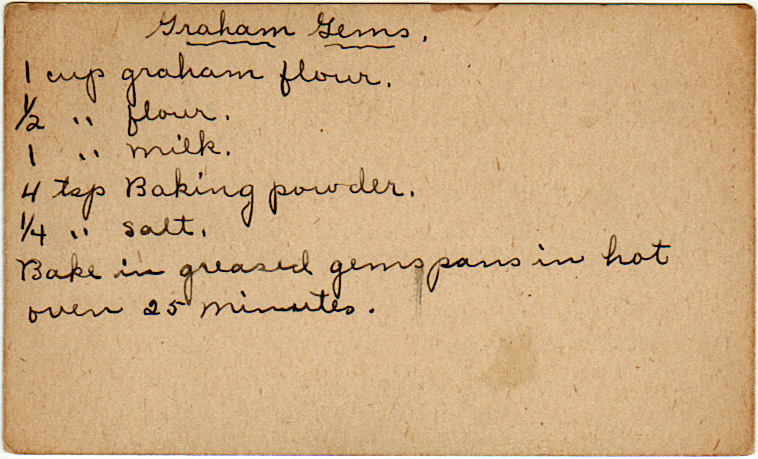Biscuits made with graham flour.
Sylvester Graham, a Presbyterian minister from Connecticut, was an advocate of a vegetarian diet in the early 19th century. His belief was that food additives increased prurient thoughts and that one could live a more holy life by having food that was closer to nature. This seemed like a practical idea, as he also believed masturbation caused blindness.
We tend to remember him most for graham crackers, the staple of his followers’ diets. But graham flour is a close second. It looks like whole wheat, and that’s an acceptable substitute, but it’s not quite the same. See, Graham used stone rollers, rather than steel rollers, to grind his grains. The higher temperature of stone mills tends to separate the parts of the wheat–germ, bran and endosperm–and grind them in different stages.
The result is a flour with a finely-ground endosperm and coarsely ground wheat and bran. To achieve this effect with modern conditions, the parts have to be ground separately, then recombined. Proper graham flour makes lighter baked goods than whole wheat does, but it’s similar.
Gems are essentially just small round biscuits baked in a gem pan, so this is a biscuit recipe of sorts.
Here’s a more elaborate version from the January 23, 1918 edition of The Boston Globe by Hamilton Wright Mable:
|
Graham Gems
One pint of sour or buttermilk, 1 teaspoon of soda. Stir well. Add 1/2 cup of sugar, 1 cup of flour, 1/2 cup of cornmeal, 2 cups of graham flour, 1/2 cup of molasses, 1 teaspoon of salt. Bake 80 to 40 minutes in gem pans; may also bake in bread loaf pan, but slowly, about one hour, at least. |
From the box of A.D. from Lutz, Florida, by way of Pennsylvania in the 1940s, and originating in Ohio in the 1920s.
Graham Gems
1 cup graham flour
1/2 cup flour
1 cup milk
4 tsp. baking powder
1/4 tsp. salt
Bake in greased gems pans in hot oven 25 minutes.


